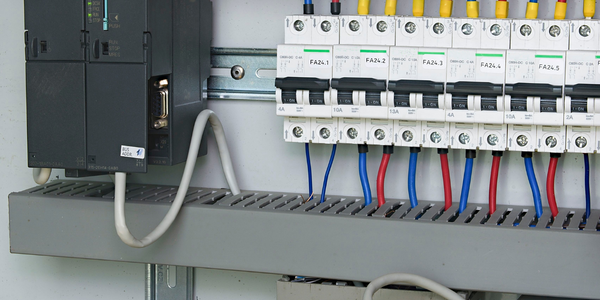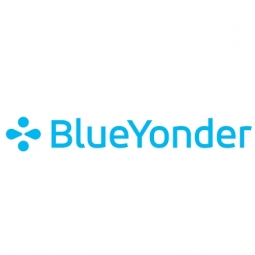Customer Company Size
Large Corporate
Region
- America
Country
- United States
Product
- Blue Yonder’s forecasting solution
Tech Stack
- Inventory Management Software
Implementation Scale
- Enterprise-wide Deployment
Impact Metrics
- Productivity Improvements
- Revenue Growth
Technology Category
- Functional Applications - Inventory Management Systems
Applicable Industries
- Electronics
Applicable Functions
- Procurement
Use Cases
- Inventory Management
Services
- Training
About The Customer
Avnet, Inc. is one of the world’s largest distributors of electronic components, computer products and embedded technology. The company’s Technology Solutions operating group sells IT solutions, including services, software and hardware, to value-added resellers. Avnet develops custom, converged IT infrastructure solutions for its partners, which involves integrating multiple products or parts from multiple manufacturers into a cohesive customer solution. The company uses the Blue Yonder forecasting capability to plan at the solution-based level and ensure all the parts are available at the time of the order.
The Challenge
Avnet, Inc., one of the world’s largest distributors of electronic components, computer products and embedded technology, was facing challenges in leveraging the full potential of Blue Yonder’s forecasting solution. Although the company had been using the solution for several years, it was not utilizing all of its features, leaving potential benefits unrealized. Avnet planners were still doing certain forecasts manually that could be handled automatically by the Blue Yonder solution. Furthermore, Avnet was not capitalizing on opportunities to provide value-added services for customers and to increase revenue.
The Solution
Avnet decided to better leverage the capabilities of Blue Yonder’s forecasting solution to increase productivity and create standardized planning practices. The company had its planners take a knowledge assessment prior to training to set a benchmark. The proficiency improvements that were gained over five days of training exceeded the company’s expectations. Following the training, the planners began using Blue Yonder’s statistical forecasting techniques for inventory planning. The majority of the total inventory value is now being forecast through the tool, which is a substantial increase. The increased productivity has provided the planning team with more time to focus on new initiatives such as developing custom, converged IT infrastructure solutions for partners.
Operational Impact
Quantitative Benefit

Case Study missing?
Start adding your own!
Register with your work email and create a new case study profile for your business.
Related Case Studies.

Case Study
Remote Temperature Monitoring of Perishable Goods Saves Money
RMONI was facing temperature monitoring challenges in a cold chain business. A cold chain must be established and maintained to ensure goods have been properly refrigerated during every step of the process, making temperature monitoring a critical business function. Manual registration practice can be very costly, labor intensive and prone to mistakes.

Case Study
Predictive maintenance in Schneider Electric
Schneider Electric Le Vaudreuil factory in France is recognized by the World Economic Forum as one of the world’s top nine most advanced “lighthouse” sites, applying Fourth Industrial Revolution technologies at large scale. It was experiencing machine-health and unplanned downtime issues on a critical machine within their manufacturing process. They were looking for a solution that could easily leverage existing machine data feeds, be used by machine operators without requiring complex setup or extensive training, and with a fast return on investment.

Case Study
Cloud Solution for Energy Management Platform-Schneider Electric
Schneider Electric required a cloud solution for its energy management platform to manage high computational operations, which were essential for catering to client requirements. As the business involves storage and analysis of huge amounts of data, the company also needed a convenient and scalable storage solution to facilitate operations efficiently.

Case Study
Leveraging the IoT to Gain a Competitive Edge in International Competition
Many large manufacturers in and outside Japan are competing for larger market share in the same space, expecting a growing demand for projectors in the areas of entertainment, which requires glamor and strong visual performance as well as digital signage that can attract people’s attention. “It is becoming more and more difficult to differentiate ourselves with stand-alone hardware products,” says Kazuyuki Kitagawa, Director of Service & Support at Panasonic AVC Networks. “In order for Panasonic to grow market share and overall business, it is essential for us to develop solutions that deliver significant added value.” Panasonic believes projection failure and quality deterioration should never happen. This is what and has driven them to make their projectors IoT-enabled. More specifically, Panasonic has developed a system that collects data from projectors, visualizes detailed operational statuses, and predicts issues and address them before failure occurs. Their projectors are embedded with a variety of sensors that measure power supply, voltage, video input/ output signals, intake/exhaust air temperatures, cooling fan operations, and light bulb operating time. These sensors have been used to make the projector more intelligent, automatically suspending operation when the temperature rises excessively, and automatically switching light bulbs. Although this was a great first step, Panasonic projectors were still not equipped with any capability to send the data over a network.









